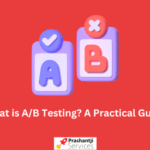How to Get High Quality Backlinks in 2024 (Best Strategies)
Understand the Significance of Backlinks
Backlinks play a crucial role in the world of search engine optimization (SEO), serving as a vote of confidence from one website to another. When a website receives high-quality backlinks from reputable sources, search engines perceive it as a trusted and authoritative resource. This, in turn, boosts the website’s visibility in search engine result pages (SERPs), leading to increased organic traffic and potential customers.
The Benefits of Quality Backinks
Quality backlinks are not only essential for SEO, but they also bring a range of benefits for your website. Firstly, backlinks help in building your website’s online reputation and authority. When other websites link to you, it signifies that your content is valuable and reliable. As a result, search engines are more likely to prioritize your website in search results.
Secondly, backlinks drive targeted traffic to your website. If a reputable website links to your content, their visitors are more likely to click on the link and visit your website. This not only increases your website’s visibility but also brings valuable users who are genuinely interested in your products or services.
Lastly, quality backlinks can have a positive impact on your brand. When your content is highlighted by others, it enhances your online reputation and credibility, making your brand more recognizable and trustworthy.
How to Get High Quality Backlinks
Getting high-quality backlinks is crucial for improving your website’s authority and search engine rankings. Here are some effective strategies to help you achieve just that:
- Become a Source for Reporters and Bloggers:
- Register with Help a Reporter Out (HARO), a service that connects journalists and bloggers with sources. Respond to relevant queries and provide valuable insights. This can lead to white hat backlinks from authoritative news sites and blogs1.
- Example pitch: If a journalist asks about the difference between graphic design and web design, you could contribute a concise and informative response.
- Publish “Skyscraper” Content:
- Identify existing content in your industry that has performed well in terms of backlinks. Use a simple Google search to find such pages.
- Create even better, more comprehensive content on the same topic. This “Skyscraper” content should be more valuable and informative than what’s already out there.
- Reach out to websites that linked to the original content and let them know about your improved version. Request them to link to your content instead.
- Build Links from Outdated Resources:
- Find outdated or broken resources related to your niche.
- Create updated and relevant content to replace those outdated resources.
- Reach out to websites that still link to the outdated content and suggest linking to your fresh resource.
- Use Content Formats Proven to Generate Links:
- Certain content formats tend to attract more backlinks. Examples include infographics, original research, case studies, and data-driven articles.
- Invest time in creating high-quality content in these formats.
- Publish Ultimate Guides:
- Comprehensive guides on specific topics tend to attract backlinks.
- Cover a topic thoroughly, providing valuable information and actionable steps.
- Use Branded Strategies and Techniques:
- Develop unique strategies or techniques related to your industry.
- Promote these strategies and techniques, and they may attract attention and backlinks.
- Authority Resource Pages:
- Identify websites that have resource pages related to your niche.
- Reach out to them and suggest adding your content to their resource page.
Bonus Strategies:
- Turn Brand Mentions into Quality Backlinks:
- Monitor mentions of your brand online.
- Reach out to the authors of these mentions and ask if they can link to your website.
- Send “Feeler” Emails:
- Send brief emails to website owners expressing appreciation for their content.
- Mention your relevant content and ask if they’d be interested in linking to it.
What is the difference between white hat and black hat backlinks?
- White Hat Backlinks:
- These are ethical and legitimate backlinks that adhere to search engine guidelines.
- Quality content: White hat backlinks are earned naturally because your content is valuable and relevant.
- Organic growth: They come from reputable websites, blogs, or online platforms.
- Examples:
- A well-respected industry blog linking to your informative article.
- A news website referencing your research study.
- Guest posting on authoritative sites with relevant content.
- Black Hat Backlinks:
- These are unethical and manipulative backlinks that violate search engine guidelines.
- Questionable practices: Black hat techniques aim to artificially inflate a website’s ranking.
- Risk of penalties: Search engines penalize sites that engage in black hat tactics.
- Examples:
- Paid links: Buying links from low-quality or irrelevant sites.
- Link farms: Creating or participating in networks solely for link exchange.
- Keyword stuffing: Over-optimizing anchor text with keywords.
- Private blog networks (PBNs): Creating a network of interconnected blogs to manipulate rankings.
How can I remove bad backlinks?
Removing bad backlinks is essential for maintaining a healthy website. Here are some steps you can take to clean up your backlink profile:
- Identify Toxic Backlinks:
- Analyze your backlinks: Use tools like Google Search Console, Ahrefs, or SEMrush to identify links that are spammy, low-quality, or irrelevant.
- Look for links from link farms, spammy directories, or unrelated websites.
- Contact Webmasters:
- Reach out to the webmasters of the sites linking to you.
- Politely request removal of the problematic backlinks.
- Provide details about the specific URLs you want them to remove.
- Create a Disavow File:
- If direct removal isn’t possible, create a disavow file.
- List all the bad backlinks you want to disavow in a .txt file.
- Format it according to Google’s guidelines.
- Submit the Disavow File:
- Log in to your Google Search Console account.
- Navigate to the Disavow Links section.
- Upload your disavow file.
- Google will then ignore those links when assessing your site.
Keep your backlink profile clean and focus on building high-quality, relevant links to improve your website’s authority and rankings!
How can I prevent bad backlinks?
Certainly! Preventing bad backlinks is crucial for maintaining a healthy website and avoiding potential penalties. Here are some effective strategies to keep your backlink profile clean:
- Understand What Makes a Backlink “Toxic”:
- Quality over quantity: Focus on acquiring high-quality backlinks from authoritative sources.
- Avoid low-quality links: Steer clear of links that are easy to generate or come from spammy websites.
- Build High-Quality Content:
- Editorial context: Aim for backlinks placed within relevant, valuable content.
- Natural links: Create content that naturally attracts links because it adds value to readers.
- Monitor Your Backlink Profile:
- Regularly audit your backlinks using tools like Google Search Console, Ahrefs, or SEMrush.
- Identify any spammy or irrelevant links.
- Remove Toxic Backlinks:
- Contact webmasters: Reach out to site owners and request removal of bad backlinks.
- Disavow tool: If direct removal isn’t possible, create a disavow file and submit it to Google using the Disavow Links tool in Google Search Console.
Remember, prevention is better than cure. Prioritize quality, relevance, and ethical practices when building and maintaining your backlink profile.
What is the difference between dofollow and nofollow links?
Certainly! Let’s explore the difference between dofollow and nofollow links:
- Dofollow Links:
- Dofollow links are hyperlinks that pass on authority from one website to another.
- They are considered a signal of trust, authority, and quality between websites.
- When a website links to another using a dofollow link, it shares its PageRank authority with the linked site.
- Dofollow links directly improve SEO because they contribute to the recipient site’s search engine rankings.
- Examples of dofollow links include guest post links, editorial links, and acknowledgement links.
- Nofollow Links:
- Nofollow links contain the rel=“nofollow” HTML attribute.
- These links are used when the user doesn’t want to generate a backlink.
- Search engines like Google do not count nofollow links as points (or votes) affecting a web page’s placement in search engine results.
- Historically, nofollow links were excluded from PageRank calculations.
- However, since March 1, 2020, Google treats nofollow link tags as a hint for crawling and indexing rather than a strict directive.
- In some cases, nofollow links may still pass PageRank value if the algorithm deems them useful for ranking and indexing purposes.
What are some best practices for building backlinks?
Certainly! Building high-quality backlinks is essential for improving your website’s authority and search engine rankings. Let’s explore some effective strategies:
- Create Linkable Assets:
- Develop high-quality content that naturally attracts links. Content such as comprehensive guides, original research, infographics, and useful tools tend to earn organic backlinks.
- Build Relationships:
- Engage with industry bloggers and site owners. The more connections you establish, the more opportunities for backlinks you’ll have.
- Attend conferences, participate in webinars, and expand your professional circle.
- Leverage Link Roundups:
- Some blogs publish posts specifically to link out to valuable content. Identify these link roundup posts and reach out to be included.
- Provide a brief summary of your content and why it’s relevant to their audience.
- Use the Moving Man Method:
- Identify websites that have changed names, shut down, or moved.
- Reach out to them, inform them of the broken link, and suggest linking to your relevant content instead.
- Guest Blogging:
- Write guest posts for authoritative websites in your niche.
- Include a bio with a link back to your site. Guest blogging not only builds backlinks but also establishes your expertise.
- Monitor Brand Mentions:
- Keep track of mentions of your brand or website online.
- Reach out to authors and ask if they can convert those mentions into quality backlinks.
- Disavow Toxic Backlinks:
- Regularly audit your backlink profile.
- If you find spammy or irrelevant links, create a disavow file and submit it to Google Search Console.
Remember, quality matters more than quantity. Focus on building relationships, creating valuable content, and earning authoritative backlinks.
Can you recommend any tools for tracking my backlinks?
Certainly! Here are some reliable tools you can use to track and manage your backlinks:
- Ahrefs Backlink Checker:
- Ahrefs offers a powerful backlink checker that provides detailed insights into your backlink profile.
- It shows you the number of referring domains, backlinks, Domain Rating (DR), and more.
- You can also monitor the growth or decline of your backlink profiles over time.
- Moz Link Explorer:
- Moz’s tool helps you analyze anchor texts and understand how competitors optimize their backlink profiles.
- It provides valuable data on followed vs nofollowed links for any target.
- SEMrush Backlink Checker:
- SEMrush detects new and lost backlinks automatically.
- It runs its own index to mimic Google’s index and provides comprehensive backlink data.
- Majestic:
- Majestic is known for its extensive link index and provides detailed information about backlinks.
- It offers features like Trust Flow, Citation Flow, and more.
- WebCEO Backlink Checker:
- WebCEO helps you monitor and optimize your website’s backlinks.
- It detects new and lost links and provides useful insights.
- Ubersuggest Backlink Analyzer:
- Ubersuggest offers a free backlink analysis tool.
- It shows you backlink data, including domain score, page score, and more.
Remember to choose a tool that aligns with your specific needs and goals. Regularly monitoring your backlinks and maintaining a clean profile is essential for SEO success! 🌟🔗
Conclusion
Certainly! In conclusion, backlinks are the backbone of SEO. While dofollow links directly impact rankings by passing authority, nofollow links have evolved in their significance. To build a strong backlink profile, focus on quality content, ethical practices, and meaningful connections. Regularly monitor your links using reliable tools. Remember, it’s not just about quantity—it’s about building a healthy, authoritative network! 🌟🔗









